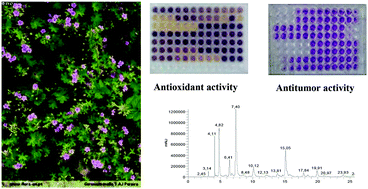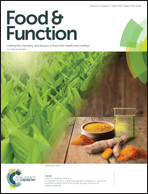Fractionation of the more active extracts of Geranium molle L.: a relationship between their phenolic profile and biological activity
Abstract
Geranium molle L., commonly known as Dove's-foot Crane's-bill or Dovesfoot Geranium, is an herbaceous plant belonging to the Geraniaceae family. Contrary to many other Geranium species, the bioactivity and the phytochemical composition of G. molle seem not to have attracted attention until a recent study from our group regarding the bioactivity of several aqueous and organic extracts of the plant. In particular, we assessed the cytotoxic activity of these extracts against several human tumor cell lines (breast, lung, cervical and hepatocellular carcinomas) and a non-tumor porcine liver primary cell line, inspired by an ethnopharmacological report describing the traditional use of this medicinal plant in some regions of Northeast Portugal for the treatment of cancer. Following this preliminary evaluation, the most active extracts (acetone and methanol) were fractionated by column chromatography and the resulting fractions were evaluated for their antioxidant activity and cytotoxicity against the same cell lines. The bio-guided fractionation of the extracts resulted in several fractions exhibiting improved bioactivity in comparison with the corresponding crude extracts. The fractions obtained from the acetone extract consistently displayed the lowest EC50 and GI50 values and presented the highest content of total phenolic compounds. The phytochemical composition of the most bioactive fractions of the acetone and methanol extracts was also determined and about thirty compounds, mainly flavonoids and phenolic acids, could be identified for the first time in G. molle.



 Please wait while we load your content...
Please wait while we load your content...